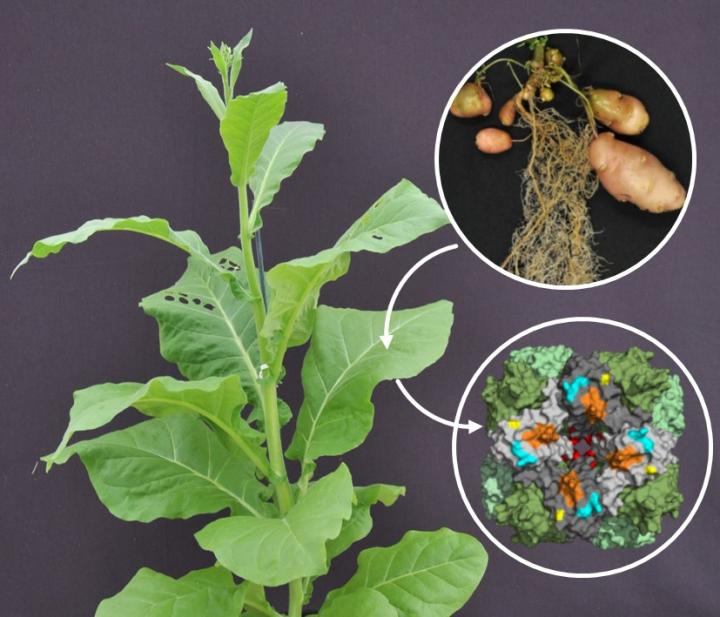
Credit: Elena Martin-Avila, et al. (2020).
Research led by scientists at The Australian National University (ANU) could lead to major improvements in crop production.
The study shows a new way to help study and ramp up photosynthesis. The breakthrough is based on revisiting an original, billion-year-old strategy in plants.
It looks specifically at rubisco activity – a crucial part of the process according to co-author Professor Spencer Whitney from the ARC Centre of Excellence for Translational Photosynthesis at ANU.
“Rubisco is an enzyme involved in the first step of carbon fixation – it starts the conversion of carbon dioxide into plant sugars,” he said.
“But compared to other enzymes, rubisco is considered a slow, inefficient catalyst.
“Many enzymes can process hundreds to thousands of molecules per second, but rubisco can only get through two to five cycles per second.
“For this reason, it’s long been recognised as a good target for improving photosynthesis — it’s a puzzle scientists have been looking at for decades.”
In plants rubisco is made up of 16 proteins – eight large and eight small subunits. Until now scientists have only been able to tinker with one subunit at a time.
“We’ve now turned back the clock a billion years to rectify this limitation,” Professor Whitney said.
“By reapplying the genome design of the bacterial ancestors of chloroplasts we can now play around with all the components of rubisco simultaneously.
“This is crucial. To ramp up its activity you have to make changes to all the components.”
It could mean big gains for canola and potato crop in particular.
“We know we can already tinker with rubisco activity in these crops, so it’s a great place to start,” Professor Whitney said.
“This is the just the first step – this technology could eventually deliver something much bigger in the not so distant future.”
###
The research has been published in the journal Plant Cell.
DOI: https:/
This research has been funded by the Australian Research Council (ARC) Centre of Excellence for Translational Photosynthesis (CoETP), led by The Australian National University, and which aims to improve the process of photosynthesis to increase the production of major food crops such as sorghum, wheat and rice.
Media Contact
Jess Fagan
[email protected]
Related Journal Article
http://dx.





